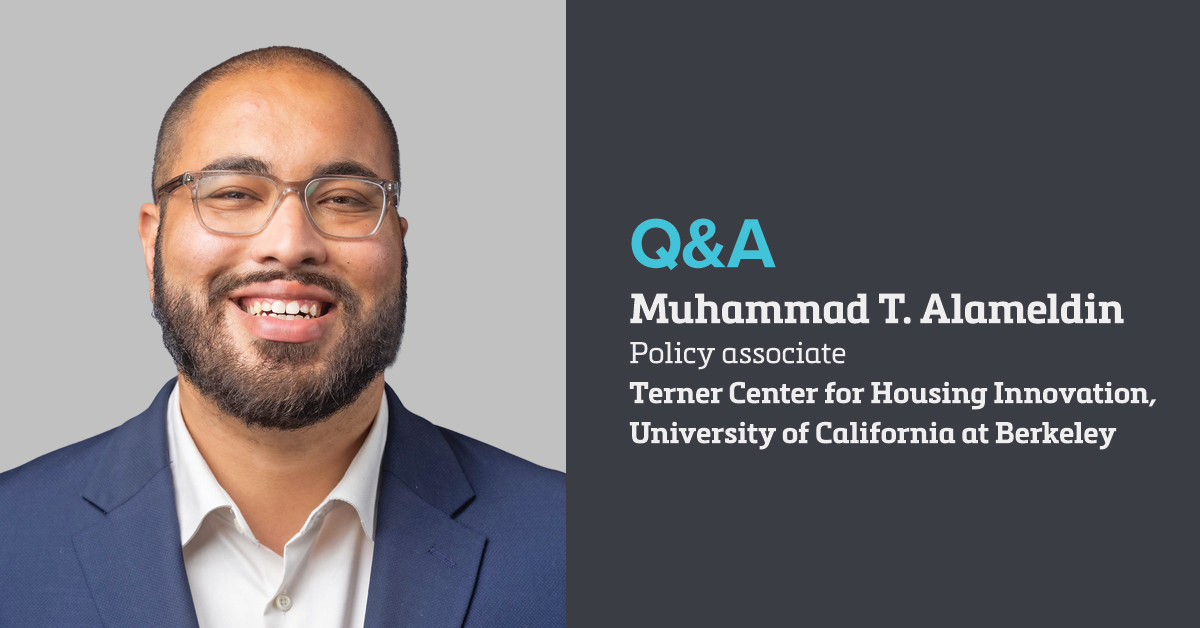Some 75% of the residential land in U.S. cities is locked up in single-family zoning, according to an analysis by The New York Times. This type of zoning has driven up housing costs by preventing so-called middle housing — such as duplexes, triplexes and townhomes — from being built in large swaths of many communities.
This type of zoning also has a legacy rooted in racism, said Muhammad T. Alameldin, policy associate for the University of California at Berkeley’s Terner Center for Housing Innovation. Single-family zoning was originally conceived in Berkeley in 1916 as a way to keep both people of color and poor people out of certain neighborhoods.
“When people say we need to end exclusionary zoning or end single-family zoning, it doesn’t mean whole neighborhoods are going to be torn down and redeveloped.”
“It’s like requiring everyone to buy an SUV,” Alameldin said. “Not everyone can afford an SUV, so the people that cannot afford it have to live in different areas. We repealed racial covenants and passed the Fair Housing Act, but we never came to terms with single-family zoning.”
Several cities and states across the U.S. have eliminated single-family exclusive zoning by allowing two units (and sometimes more) to be built on a single lot. A recent study by The Pew Charitable Trusts found that the cost of rent in four of these cities grew much more slowly over a six-year period than the rest of the country. Alameldin spoke to Scotsman Guide about this shift in land-use policy and what it could mean for the nation’s housing crunch.
Why are lawmakers rethinking single-family zoning at this moment?
We’re in a severe housing crisis, so we must open up the land that’s only zoned for single-family homes for other options. It doesn’t mean that single-family homes are illegal. It means that in that zone you could build a single-family home, or you could build three units, four units or eight units.
People seem to conflate the removal of single-family zoning with a ban on single-family homes. Why is that?
When people say we need to end exclusionary zoning or end single-family zoning, it doesn’t mean whole neighborhoods are going to be torn down and redeveloped. It just means you as a homeowner or developer have the option to build more units. Single-family homes are not banned by the end of single-family zoning. It just means you’re going to have more housing options.
Why is homeownership important?
It’s a major wealth driver. Homeownership gives people access or pathways to starting a business, to putting their kids in college, to staying in the community to build equity and stability in retirement. It’s the cornerstone of the American dream.
Is supply key to the housing affordability crisis?
A hundred percent. People are leaving California for two reasons. No. 1, the rent is too high and I can’t afford to live here. Or No. 2, I’m making a middle-class income, but I can’t buy a home. If we were just to build enough housing to keep up with population and job growth, families could stay together instead of living in whole different states.
What caused the current undersupply of housing?
There was this age of single-family zones, so there weren’t a lot of places to build. And the Great Recession took out a lot of builders (from the labor pool). We have to make up for 50 years of underbuilding in the next 20 or 30 years, or this crisis is going to get a whole lot worse, and we’re going to have an economically segregated society — much worse than we do now.
What can the mortgage industry do to encourage more building?
Advocate within their local communities for more housing typologies and fix the appraising system when it comes to accessory dwelling units (or ADUs, which are often valued at less than the cost of construction).
Any final thoughts?
It’s not just zoning that needs to be changed. Minimum and maximum unit sizes, floor-area ratio requirements, the way we structure our impact fees — these sorts of issues that are within the process of building need to be rethought as well. ●








